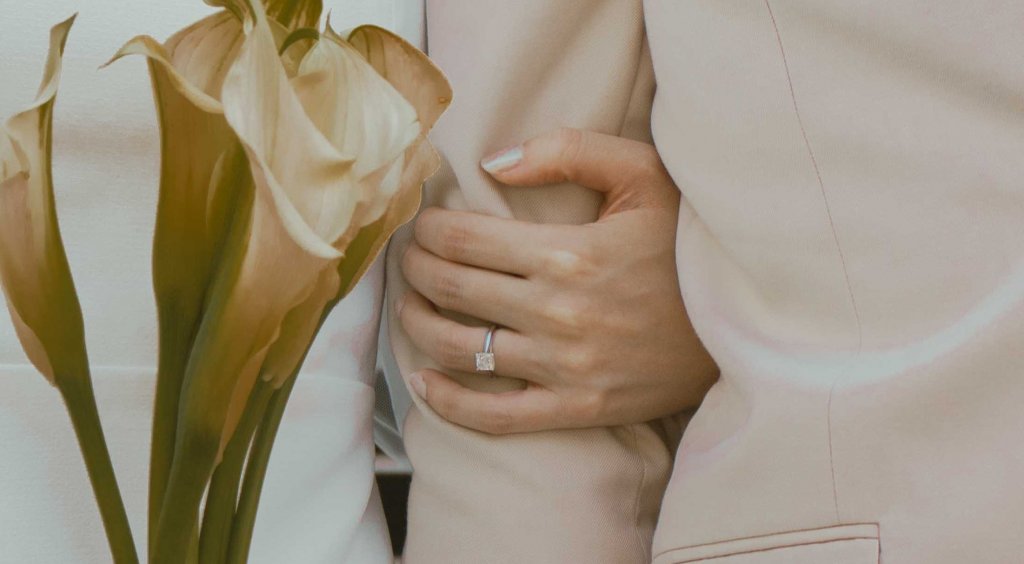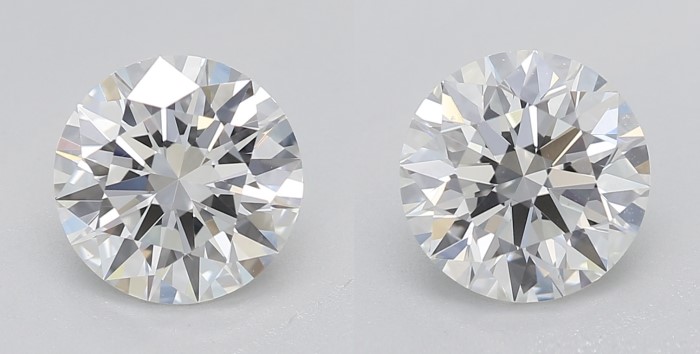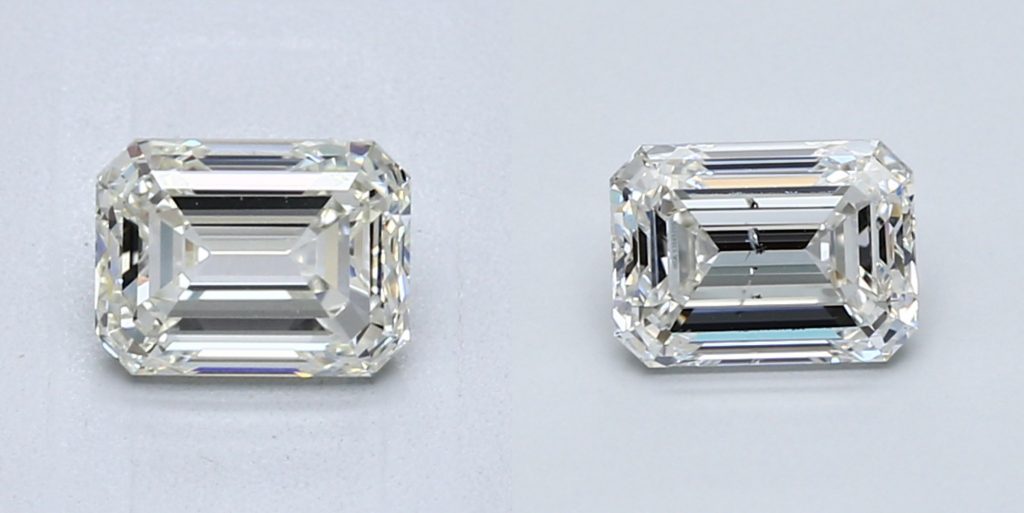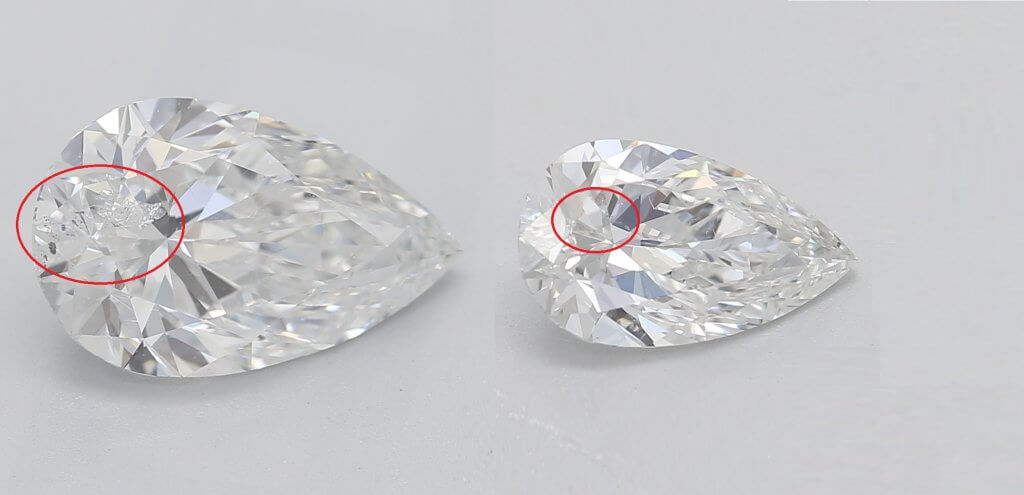Discover The Rarity Of Type IIa Diamonds
Key Takeaways
- While it’s not the most talked-about subject, there are multiple different ‘types’ of diamond out there – although, admittedly, one particular type (Ia) comprises the majority of diamonds mined and sold.
- Type IIa diamonds are considered free from chemical impurities.
- One of the most common effects created by chemical impurities is a slight yellow or brownish color, which is what buyers seek to avoid by learning how to interpret the GIA’s Color Scale.
- Type IIa diamonds are incredibly rare, and it is highly unlikely most of us will ever encounter one.
- Don’t waste your time and money chasing after this rare diamond type. It’s only worthwhile for collectors and investors.

Diamonds are the solid, crystalline form of carbon, but most diamonds – and, in all likelihood, every diamond you encounter at the jewelry store – will feature chemical impurities (most notably, nitrogen) present within their internet structures as a result of their creation in nature.
These diamonds are categorized as ‘Type I’ diamonds, and, as you can imagine, are by far the most common. More than 95% off natural (non-lab grown) diamonds are Type Ia, with Type Ib diamonds representing a much rarer class. These diamonds are a deep brown or yellow color, and contain much a much higher percentage of nitrogen (which is what creates that distinctive color).
What is a IIa diamond?
A Type IIa diamond are almost totally (or really are) free from chemical impurities, meaning that they are almost always colorless (although they can take on color as a result of structural imperfections caused by the conditions deep below the earth, rather than chemical impurities).
These structural imperfections can be artificially ‘fixed’, using a process known as HPHT
Type IIa diamonds represent no more than 2% of natural diamonds, making them a very rare find in nature. Over the years, they have been discovered in Botswana, Canada, and Australia, although they were initially found in (and named after) a citadel in India named Golconda Fort.
Are Type IIa diamonds more expensive?
Yes, Type IIa diamonds are highly valued within the global diamond community for their rarity and beauty. Some of the most influential diamonds in the world are Type IIa, and are incredibly valuable.
The Pink Star Diamond, flawless and featuring a fancy vivid pink color (one of the rarest colors), sold at auction in 2017 for more than $71 million. Another fancy vivid pink diamond, the 18.96 carat Pink Legacy, is also Type IIa, and sold for more than $50 million in 2018.
The Krupp Diamond worn by actress Elizabeth Taylor is also a Type IIa diamond, as well as the Koh-i-Noor, which is a part of the British Crown Jewels.
Another factor that you may have noticed is that Type IIa diamonds tend to be significantly larger than the average diamond you would find in a jewelry store – or even on the red carpet. This fact alone means that, before you even take into account the fact that they are verging on perfection, they are already bound for an incredibly high price tag.
The only exception to this rule is lab grown diamond. The majority of these stones are classed as Type II, since it’s a lot easier for manufacturers to control conditions, and limit chemical impurities than it is for nature to create something perfect. Of course, this does nothing to alter the inherently low value of lab grown diamonds, or the fact that they are lacking the interest and romantic appeal of natural Type IIa (or Type Ia, Type Ib, or Type IIb) diamonds.
Are all pink diamonds Type IIa?
Yes. While other fancy color diamonds are created by chemical impurities, pink is thought to be caused solely by the conditions during the diamond’s creation and journey toward the earth’s surface.
Pink diamonds remain something of a mystery, since the absence of any chemical impurities mean that we can only attempt to imagine what occurred so long ago, so deep within the earth’s mantle.
Pink diamonds are Type IIa, but not all Type IIa diamonds are pink. As we mentioned, they can be totally colorless, or they can feature a yellow, brown, orange, red, or purple color as a result of those structural changes, rather than chemical impurities.
Who buys type IIa diamonds?
Private collectors and jewelers, for the most part. The rarity and high value of these diamonds mean that most of us will never come face to face with one.
Keep in mind that identifying a Type IIa diamond is not always as easy as it may seem. Sure, it doesn’t take a diamond expert to realize that a diamond like the Pink Star or the Koh-i-Noor is truly a once-in-a-lifetime occurrence, but plenty of Type IIa diamonds are only identifiable through much close inspection.
The difference between a near-colorless Type Ia diamond and a colorless Type IIa diamond are generally only identifiable using infrared spectrometer. This means that, even if you did somehow come across a Type IIa diamond, the cost would not prove worthwhile, since an engagement ring is created to be enjoyed and appreciated on the finger, rather than scrutinized through a lens.
Do you need to worry about diamond type?
For the most part, no. It’s a fascinating subject, but there’s no risk of you ‘accidentally’ overspending on a Type IIa diamond, for instance.
The main reason why you don’t need to get caught-up on diamond types is, put simply, because of the fact that the overwhelming majority of diamonds brought into the world, cut, polished, and sold to the general public are Type Ia. It’s totally possible to find eye clean diamonds with no noticeable color in this type, and savvy shoppers manage it every day.
The key is to do your research into diamonds ahead of time – particularly the Four Cs of diamond quality, and how you can make them worth for you not just visually, but financially. That, and to ensure that you are consulting with an experienced jeweler – someone who understands the big and small picture, and who will be committed to helping you find the best diamond for your engagement ring.
Our Summary
Diamond type is a fascinating subject, but you won’t find as much information on it as other aspects of diamond quality. Unless you’re in the market for a multimillion dollar investment into one of the world’s rarest and most revered diamonds, you don’t need to understand the atomic differences between a Type Ia diamond and a Type IIa diamond.
What you do need to understand are topics like eye cleanliness, proportion and ratio, symmetry, polish, color, and fluorescence. Get your head around the process of understanding a diamond’s qualities by browsing diamonds online ahead of your consultation, but remember that nothing can replace your own in-person, up-close inspection of your diamond.

Jul 28, 2022 By Willyou.net
SI1 vs Vs2 Diamonds – Which One is Better?

Jul 29, 2022 By Willyou.net
Eye Clean Diamonds: The Ultimate Balance In Clarity








